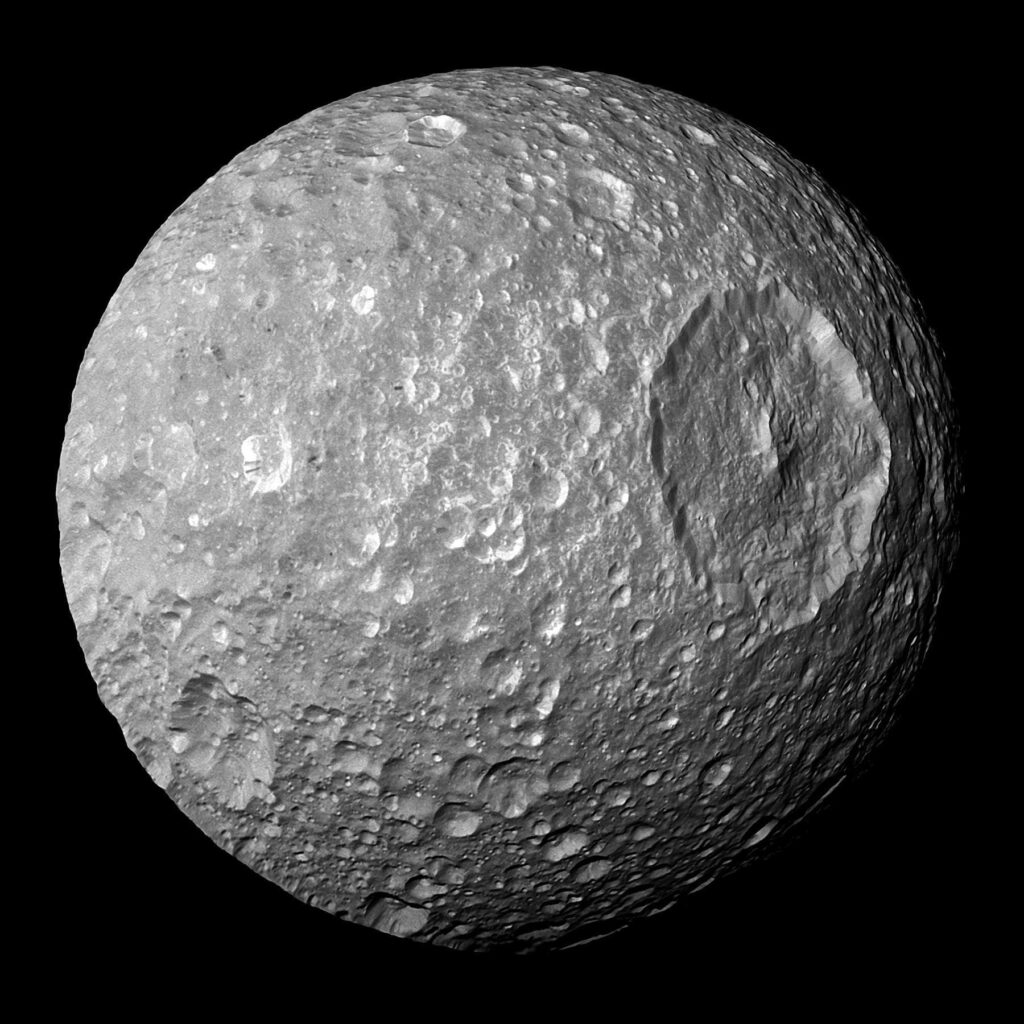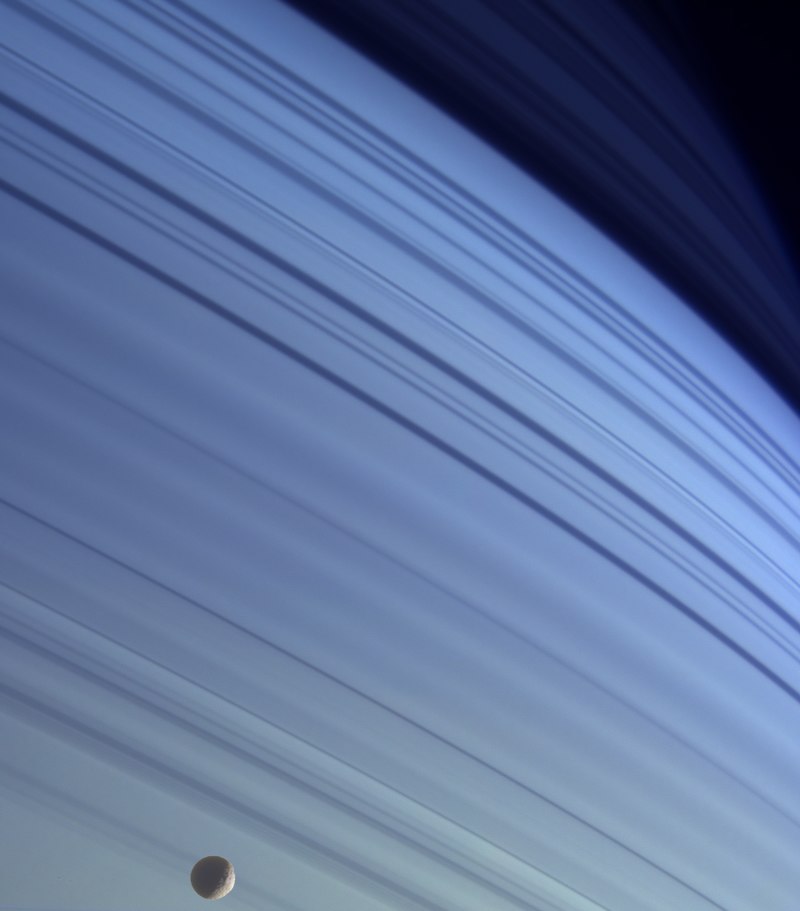Hidden in the depths of Mimas, an ocean is the youngest in the Solar System. Its age ranges from 5 to 15 million years. This was the conclusion reached by researchers whose article was published in a recent issue of the journal Nature.
Moon — the “Death Star”
Mimas is a relatively small 400-kilometer moon of Saturn. Until recently, this icy moon was mostly known for the distinctive 139-kilometer Herschel impact crater, giving it a visual resemblance to the Death Star from Star Wars.

But a few years ago, scientists suspected that an ocean hid under the surface of Mimas. This is indicated by the data collected by the Cassini mission. The Earth messenger managed to detect the characteristic “rocking” of the moon, indicating that a layer of liquid water is hidden in its depths at a depth of 30 km.
At the same time, it should be emphasized that Mimas does not outwardly betray the presence of an ocean in its interior. Unlike Europa, its surface is covered with many ancient craters and there are no faults and geysers on it, as on Enceladus.
The youngest ocean in the Solar System
An international team of scientists became interested in this case and conducted a new study, focusing on the orbit of Mimas, or rather, on the small changes that it undergoes due to the presence inside the ocean. It showed that under the influence of tidal forces, the orbit of Mimas should gradually lose its eccentricity and become more circular. In turn, this allowed them to estimate the age of the ocean. The answer surprised the scientists. The Mimas’ ocean is very young, ranging in age from 5 to 15 million years.

This may explain why Mimas is not showing the same activity as Europa or Enceladus. Modeling showed that the boundary between the ocean and the ice reached a depth of less than 30 kilometers very recently (less than 2-3 million years ago). This is too short a period of time for signs of activity to appear on the surface. Thanks to this discovery, Mimas may become one of the priority goals for research in the future, the purpose of which is to find an answer to the question of the origin of life in the Solar System.
According to https://phys.org
Follow us on Twitter to get the most interesting space news in time
https://twitter.comne/ust_magazi


